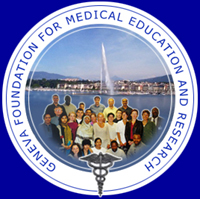Actions to face reemerging diseases: impact on medical student training
Acciones para el enfrentamiento a enfermedades reemergentes: impacto en la formación del estudiante de Medicina
Fanny Rodríguez Aguilera¹, Matilde Cárdenas Carvajal2, Carmen Cruz Brito3, Liliam Mejías Chao4
1 University of Medical Sciences of Villa Clara. Cuba. Email: fannyra@infomed.sld.cu
2 University of Medical Sciences of Villa Clara. Cuba. Email: matildecc@infomed.sld.cu
3 University of Medical Sciences of Villa Clara. Cuba. Email: carmencb@infomed.sld.cu
4 University of Medical Sciences of Villa Clara. Cuba. Email: liliammc@infomed.sld.cu
ABSTRACT
This research paper aims to show the actions performed by medical students in dealing with the re-emerging diseases in the municipality of Santa Clara; it means the work done by them where they acquired new knowledge and skills in the prevention and control of diseases such as dengue and cholera considered one of the highest incidences in terms of morbidity and mortality worldwide. On the other hand, it expresses how the different activities carried out contributed not only to the strengthening of values in the future professional of the medical science, but also its results modified the health picture positively in the territory and the university-community relationship was consolidated.
MeSH: Public Health, students, medical, community-institutional relations, education, medical.
RESUMEN
La presente comunicación tiene como objetivo mostrar las acciones realizadas por los estudiantes de Medicina en el enfrentamiento a las enfermedades reemergentes en el municipio Santa Clara; significa la labor realizada por ellos donde adquirieron nuevos conocimientos y habilidades en la prevención y control de afecciones como el dengue y el cólera consideradas unas de las de mayores incidencias en términos de morbilidad y mortalidad a nivel internacional. Por otra parte, expresa cómo las diferentes actividades ejecutadas contribuyeron no solo al fortalecimiento de valores en los futuros profesionales de las ciencias médicas, sino que sus resultados modificaron el cuadro de salud del territorio de forma positiva y se consolidó la relación universidad-comunidad.
DeCS: Salud Pública, estudiantes de Medicina, relaciones comunidad-institución, educación médica.
Since late last century, the world has faced the emergence and re-emergence of many infectious diseases, among them dengue and cholera have one of the highest incidences in terms of morbidity and mortality. It is estimated that the number of people affected in the first case is from 50 to 100 million people each year, with a total of half a million who need hospital care having life-threatening condition and occur about 12 500 deaths. Significant outbreaks of this condition tend to occur every five or six years in different countries.1
The indices of infestation by Aedes aegypti today have been the highest compared with those recorded in the 1950s and 1960s. Undoubtedly, among other factors, demographic changes in many nations, uncontrolled urbanization besides poor sanitary and hygiene conditions in which many people live have contributed to the reemergence of dengue.2
Moreover, in relation to the resurgence of cholera it is expressed that during the nineteenth century pandemics repeatedly disseminated from the Ganges delta in India to almost the whole world. During the first half of the twentieth century, the disease was confined largely to Asia, except in 1947 when there was a serious outbreak in Egypt. Since 1961, the vibrio cholerae biotype El Tor, from Indonesia, spread to Asia and then to Eastern Europe and Africa, and from North Africa to the Iberian Peninsula and Italy in 1973. In 1977 and 1978 were small outbreaks in Japan and first appeared in the South Pacific. The condition has continued: in 1993, 16 countries in Africa, 25 in Asia, 21 in America and Europe reported 3 autochthonous cases. Some reasons are attributed to poor public health, inadequate water treatment and improper disposal of sewage and waste.
It is clear that the environment in which people live has a huge impact on their health: poor sanitation, inadequate water supply, poor disposal of solid waste and sewage, high contamination within housing and overcrowding, are responsible for about 30 % of the total global burden of disease, these aspects which now have increased as risk factors in most countries and all which is credited with its reemergence; the Cuban nation is no exception to this global problem. Water and food supply in adequate quantities of acceptable quality and break the fecal-oral chain are essential to reduce gastrointestinal diseases.3,4
From 2012, in Cuba cholera outbreaks that began in the eastern region and were expanding throughout the country were reported; the province of Villa Clara in 2014 increased the number of cases, so it required the joint efforts of all forces and means for its control and eradication.
For these reasons the actions of medical students in controlling both diseases are simultaneously emphasized in different health areas of Santa Clara municipality specifically, having the largest number of cases; their performance besides contributing to control a health problem, favored and strengthened their competence and performance as future professionals in the medical sciences.
Among the research actions carried out for dengue control in the community for students receiving the course of Public Health in the study period, are: control of foci, identification of febrile syndromes and hygiene deficiencies in homes, elimination of potential breeding sites of Aedes aegypti vector, health promotion and education actions and reporting environmental deficiencies in the community; although listed as relevant eliminating vector breeding sites and health promotion and education actions are carried out in the visited homes.4,5
For the control and eradication of cholera become more important those tasks aimed specifically at identifying sanitary deficiencies, which allowed, in addition to verifying the cleanliness in homes that students be trained in health promotion and education, to influence the decrease of hydric transmitted diseases.6
Generally a suitable arrangement and preparation of medical students to perform these actions was evident. Once concluded, they showed them having mastery about basic elements for the prevention and control of re-emerging diseases in the community.
The role of students and professionals in the medical career in different primary health care settings is clearly explained in the Cuban guides for comprehensive care to patients with dengue, issued in 2011 by the Ministry of Public Health.4
Vela Valdes et al.5 state that it is essential to emphasize the principles and values of the formation of human resources in health, preparation and updating of teachers, the field in which it develops and methodology of teaching and learning, and that its practice must be in structures associated with the community and not just in the classroom, in addition to stimulating training, community involvement and teamwork.
It was of great significance for students the experience received during community work, where they acquired new knowledge and skills in the prevention and control of transmissible diseases such as dengue and cholera, they were instructed in managing the control of focus and strengthened their epidemiological knowledge approach and risk perception; the various activities carried out contributed not only to the strengthening of values in the future professional of the medical science, but also its results positively modified the health picture in the territory and the university-community relationship was consolidated.
Declaration of conflict of interest
The authors declare that they don´t have conflicts of interest.
BIBLIOGRAPHIC REFERENCES
1. Arnold Domínguez Y. Dengue: Valoración de la lucha antivectorial en el policlínico "Isidro de Armas". Rev Cubana Hig Epidemiol [Internet]. 2011 [citado 21 Oct 2016];49(1):[aprox. 7 p.]. Disponible en: http://scielo.sld.cu/scielo.php?script=sci_arttext&pid=S1561-30032011000100012
2. Hernández Gómez M, Olivera Cuadra D, Alonso Reyes M, Rodríguez Niebla K, Cárdenas Carvajal M, Rodríguez Aguilera F. Preparación del estudiante de Medicina en prevención y control del dengue. EDUMECENTRO [Internet]. 2014 [citado 27 Jun 2016];6(1):[aprox. 9 p.]. Disponible en: http://scielo.sld.cu/scielo.php?script=sci_arttext&pid=S2077-28742014000100013
3. Castell-Florit Serrate P, Gispert Abreu EÁ. Intersectorialidad en el contexto socioeconómico cubano y sus implicaciones en la salud de la población. Rev Cubana Salud Pública [Internet]. 2012 [citado 1 Oct 2016];38(5):[aprox. 11 p.]. Disponible en: http://scielo.sld.cu/scielo.php?script=sci_arttext&pid=S0864-34662012000500015
4. Ministerio de Salud Pública.Guías cubanas para la asistencia integral a pacientes con dengue. La Habana: Editorial Ciencias Médicas; 2011.
5. Vela Valdés J, Fernández Sacasas JA, Álvarez Sintes R. Política de formación médica para la atención primaria de salud y el papel de la asignatura Medicina General Integral en el currículo. Educ Med Super [Internet]. 2012 [citado 27 Jun 2016];26(2):[aprox. 11 p.]. Disponible en: http://scielo.sld.cu/scielo.php?script=sci_arttext&pid=S0864-21412012000200009
6. Rodríguez Carvajal G, Meras Jáuregui RM, Rodríguez Aguilera F. Prevención y promoción de salud: necesidades básicas en el aprendizaje de los alumnos de medicina. Medicentro Electrónica [Internet]. 2012 [citado 27 Jun 2016];16(2):[aprox. 3 p.]. Disponible en: http://medicentro.sld.cu/index.php/medicentro/article/viewFile/1223/1185
Submitted: October, 5 2016.
Accepted: October, 31 2016.
Fanny Rodríguez Aguilera. University of Medical Sciences of Villa Clara. Cuba.
Email: fannyra@infomed.sld.cu
Copyright (c) 2016










